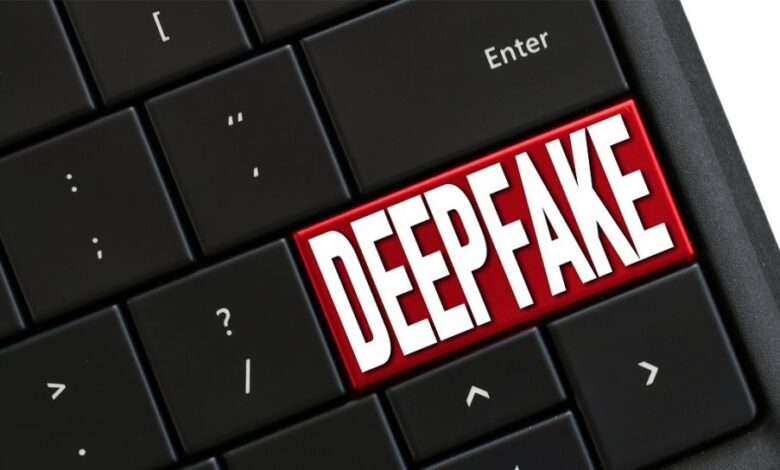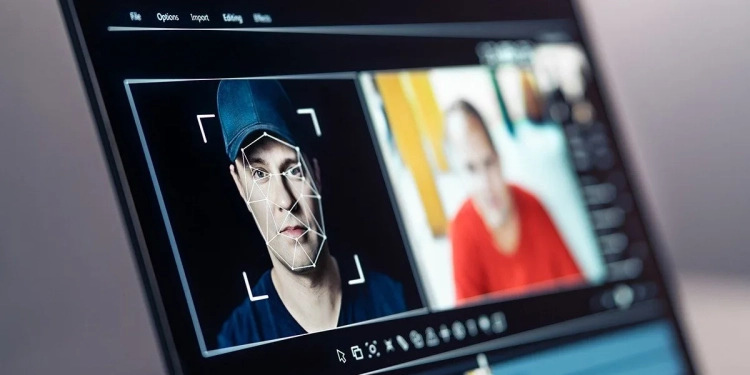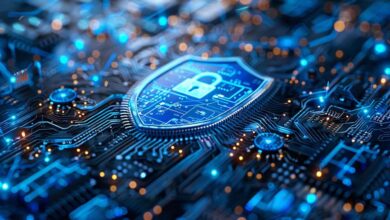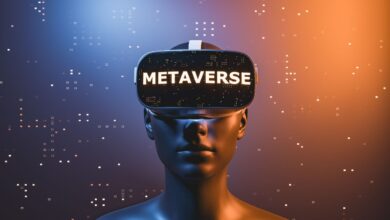Deepfakes Evolve: New Phishing Scams Exposed

We’ve all been warned about email phishing—the hastily written message with obvious spelling errors, asking for your password. But those days are quickly becoming relics of the past. The digital threat landscape has undergone a dramatic, terrifying evolution.
Today, we face deepfake phishing, also known as “spear-phishing 2.0.” This new menace leverages sophisticated Artificial Intelligence (AI) and Machine Learning (ML) to create incredibly realistic synthetic media—audio, video, and even real-time interactions—that mimic specific individuals with chilling accuracy.
Imagine getting a video call from your CEO demanding an urgent wire transfer, or a voice message from your daughter, clearly distressed, asking for money. The voice is unmistakable, the face is hers.
This is the power of the deepfake. It bypasses our traditional security instincts, which rely on identifying obvious errors, and instead targets our deepest human vulnerability: trust.
Since the targets are often high-value individuals or specific employees (hence the term spear-phishing), the financial and reputational damage from a single successful attack can be catastrophic. Understanding how deepfakes work and, more importantly, how to defend against them, is no longer a niche security concern—it’s a survival skill in the modern digital era.
Understanding the Deepfake Evolution

To fight this enemy, we must first understand its technology. Deepfakes are created using a process called Generative Adversarial Networks (GANs), where one AI generates the fake media while a second AI evaluates its realism, leading to constant improvement until the output is nearly flawless to the human eye and ear.
A. Key Modalities of Deepfake Attacks
Deepfakes are no longer just restricted to sensational political videos; they are weaponized across multiple communication channels for financial gain.
A. Deepfake Audio (Voice Cloning): This is the most prevalent and effective type of attack in the corporate world. Cybercriminals only need a few minutes of a person’s recorded voice (easily gathered from public interviews, social media, or even voicemail greetings) to clone it. The resulting synthetic voice is used in urgent phone calls or voicemail messages to mimic CEOs, managers, or colleagues, requesting fraudulent payments or credentials.
B. Deepfake Video (Video Conferencing): With the rise of remote work, attackers are using video synthesis to impersonate executives in brief, urgent video calls. The video might be low-resolution or stutter, which the attacker blames on “bad Wi-Fi,” masking the imperfections while conveying urgency and legitimacy.
C. Deepfake Text (Advanced Phishing Emails): While not a visual deepfake, the underlying AI technology is the same. Large Language Models (LLMs) like those used by Generative AI can create personalized phishing emails that are contextually perfect, mimicking a co-worker’s tone, typical jargon, and internal references, making them indistinguishable from genuine correspondence.
D. Deepfake Biometrics: This emerging threat involves using synthetic video or audio to bypass identity verification systems that rely on facial or voice recognition.
B. Why Deepfakes are the Ultimate Phishing Tool
Deepfakes are so dangerous because they successfully circumvent all previous security countermeasures.
A. Bypassing the Human Eye: The human brain is wired to trust what it sees and hears. A deepfake provides the emotional and visual “proof” that traditional text-based phishing lacks. The element of visual and auditory familiarity dissolves skepticism.
B. Exploiting Remote Work: The move to distributed teams means impromptu calls and messages are the norm. The lack of in-person verification or the ability to confirm a request by simply walking down the hall makes employees far more vulnerable to urgent, synthesized requests.
C. Scaling the Attack: Once the AI model is trained on a specific target (e.g., the company CFO), the criminal can generate hundreds of unique attack scenarios across different employees with minimal additional effort, allowing them to target an entire organization simultaneously.
D. The Lack of Digital Fingerprints: Unlike traditional malware, which leaves a signature, a deepfake is just a video or audio file. It is extremely difficult for existing security systems to flag it as malicious content simply because it appears to be a legitimate communication.
The Anatomy of a Deepfake Scam
Successful deepfake attacks follow a specific, calculated sequence designed to manipulate the victim.
A. Reconnaissance and Data Harvesting
The attacker first needs source material to train the AI and context to make the request credible.
A. Open-Source Intelligence (OSINT) Gathering: Attackers scour LinkedIn, company websites, news interviews, social media (like YouTube and Instagram), and even podcast appearances to collect voice recordings and high-quality video footage of their target executive.
B. Internal Context Acquisition: They use traditional phishing or infostealer malware to gain access to internal communications (emails, meeting notes) to understand current projects, pending transactions, and company jargon. This makes the synthetic communication contextually perfect.
C. Target Selection: They identify the “Vulnerable Gatekeeper”—the employee with access to funds, confidential data, or system credentials (e.g., Accounts Payable staff, HR, or IT helpdesk).
B. Synthesis and Delivery
This is where the AI does its work, creating the hyper-realistic forgery and delivering it to the victim.
A. Voice/Video Cloning: Using the collected audio/video, the GAN model generates the desired script (e.g., “Transfer $50,000 immediately to the account for the urgent acquisition”).
B. Channel Selection: The delivery is often via a low-security or time-sensitive channel to discourage verification—a sudden phone call, an encrypted messaging app (like WhatsApp), or a spontaneous video conference. The audio-only attack is particularly common due to its ease of execution and low data requirements.
C. The Urgency/Secrecy Ploy: The deepfake call is always accompanied by high-pressure language (“This must be done now,” “I’m in a meeting,” “It’s a highly confidential matter, don’t mention it to anyone else”). This is a psychological trick to bypass critical thinking.
C. The Payday and Cleanup
Once the victim complies, the criminals move quickly to secure their illegal gains.
A. Rapid Fund Diversion: If money is transferred, it is immediately moved through multiple cryptocurrency wallets or overseas accounts, making it nearly impossible to trace or recover.
B. Credential Exploitation: If the victim provided login credentials, the attackers use them instantly to plant ransomware, exfiltrate massive amounts of data, or establish backdoors for future attacks.
C. Deleting Traces: The attacker erases any logs or digital footprints associated with the deepfake call or transfer request, often making it difficult to pinpoint the initial vector of the attack.
Comprehensive Defense Strategies for Organizations
Combating deepfake phishing requires a multi-layered approach that combines technology, policy, and, most importantly, human training.
A. Establishing Verification Policies (Human Firewall)
Technology can be spoofed, but established, mandatory human protocols are the best defense.
A. Two-Person Verification Protocol: Enforce a strict, non-negotiable rule that any request for money transfer, credential changes, or sensitive data access—regardless of who sends it—must be verified through a secondary, pre-arranged channel. If the request comes via video/call, the verification must be done via a separate email, internal messaging system, or a known landline.
B. The “Code Word” System: Implement a random, non-contextual, company-specific code word or phrase that a manager must use when making urgent, non-standard requests. A deepfake AI, which is trained only on public data, will not know this secret, internal word.
C. Question the Context: Train employees to challenge the request by asking personal, non-public questions that the deepfake source (the AI) wouldn’t know, such as “What was the topic of our meeting last Friday?” or “What was the last project we discussed?”
D. Zero Trust Communications: Adopt a mentality of “Trust No Voice, Trust No Video” for high-stakes transactions. Every unusual request must be treated as a potential deepfake until proven otherwise.
B. Leveraging Defensive Technology
While challenging, new tools are emerging to help identify synthetic media.
A. AI-Powered Deepfake Detection Software: New security tools are being developed that analyze subtle digital artifacts, flickering, or unusual head movements in video, or non-human vocal patterns in audio, to flag deepfakes in real-time. Organizations should begin researching and integrating these capabilities into their network monitoring.
B. Enhanced Multi-Factor Authentication (MFA): Where possible, move beyond simple app-based MFA and implement FIDO2 hardware keys (physical security tokens). These are significantly harder to bypass because they require physical presence and cannot be easily spoofed through a deepfake.
C. Continuous Monitoring of Cloud Logs: Monitor API calls and administrative actions on cloud platforms (AWS, Azure, etc.) for anomalous behavior immediately following a potential deepfake interaction. An immediate, high-privilege change after a “CEO call” is a massive red flag.
D. Advanced Endpoint Protection: Ensure endpoint detection and response (EDR) solutions are configured to block infostealer malware that gathers the initial reconnaissance data for the deepfake attacks.
C. Employee Training and Simulations
The human firewall only works if it is actively maintained and tested.
A. Realistic Simulation Drills: Move beyond simple phishing email tests. Conduct “vishing” (voice phishing) and deepfake simulation calls on high-value employees to see if they adhere to the two-person verification protocol. The failure of the drill should be a teaching moment, not a punitive one.
B. Security Awareness Education: Use real-world examples of deepfake scams to illustrate the risk. Focus on teaching emotional self-regulation—when you feel panic, that is the exact moment to hit the pause button and initiate verification protocol.
C. Executive Protection Training: The C-Suite and high-level managers, whose images and voices are often the targets of the deepfake creation, need specific training on minimizing their public digital footprint (e.g., limiting how much voice or video content is posted publicly).
Addressing the Threat of Deepfake Biometrics

As identity verification moves away from passwords toward biometrics, the threat of deepfake injection becomes a critical concern for both consumers and enterprises.
A. Securing Biometric Systems
A deepfake of a manager’s face could theoretically be used to gain access to a corporate physical facility or a secure network resource.
A. Liveness Detection: Ensure all biometric security systems utilize robust Liveness Detection technology. This checks for non-static signs of life, such as subtle involuntary muscle movements, pupil dilation, or 3D depth mapping, making it difficult for a flat video or still image (even a deepfake) to pass as a real person.
B. Multi-Modal Biometrics: Rely on multiple biometric factors (e.g., both facial recognition and voice authentication) rather than just one. This increases the complexity for the attacker, requiring them to synthesize multiple perfect deepfakes simultaneously.
C. Zero Trust for Biometric Access: Even if a biometric scan is successful, the system should still require a secondary, non-biometric authentication factor (e.g., a hardware token or contextual access based on time/location) before granting access to critical assets.
B. Personal Biometric Hygiene
Individuals must protect their digital likeness as carefully as their passwords.
A. Restrict High-Quality Biometric Data: Be cautious about apps, surveys, or services that ask for high-resolution 3D facial scans or long voice samples, as this data is invaluable for training deepfake models.
B. Regular System Review: If your personal devices use facial or fingerprint recognition (e.g., Face ID, Touch ID), regularly review the list of approved biometric profiles and ensure the underlying software is always up-to-date to utilize the latest liveness checks.
Conclusion
The rise of deepfake phishing marks a profound and irreversible shift in the cybersecurity landscape. We have moved from a digital threat environment where we primarily battled technical exploits to one where the main battleground is human psychology and trust.
The core principle of “seeing is believing” has been fundamentally broken by sophisticated, accessible AI tools. This threat is unique because it forces organizations to look inward, not just at their firewalls, but at their most reliable asset: their employees.
The defense against this invisible enemy cannot be purchased in a single box. It requires a holistic and human-centric strategy. This means making Two-Person Verification a mandatory, reflex-like behavior for all high-risk transactions.
It means arming your teams with a Code Word System—a simple, low-tech solution that provides an immediate, un-spoofable verification method. Furthermore, organizations must invest in Continuous Security Awareness Trainingthat utilizes realistic deepfake simulations to build “immunity” against emotional manipulation.
Technologically, the mandate is clear: ubiquitous FIDO2 MFA to protect credentials, and the rapid deployment of AI-powered Liveness Detection to protect biometric access points.
The danger of deepfake scams will only escalate as AI models become faster, cheaper, and more precise. The attackers are leveraging the power of automation; defenders must respond with policy and psychological resilience.
By treating every urgent, high-value communication with a healthy dose of suspicion and adhering strictly to established verification protocols, we can collectively neutralize the deepfake threat. The ultimate goal is to foster a culture of Zero Trust in Communication, ensuring that while the technology may lie, the integrity of the transaction process remains sacrosanct.
The battle for the future of digital security is fundamentally the battle for trust, and vigilance is the only currency that matters.







